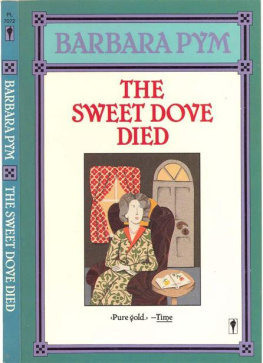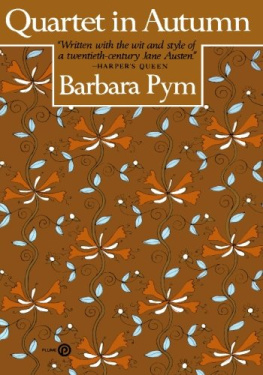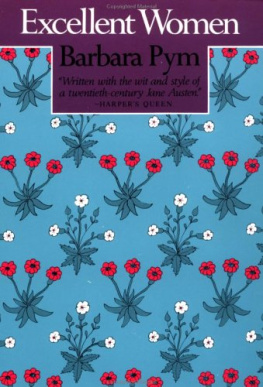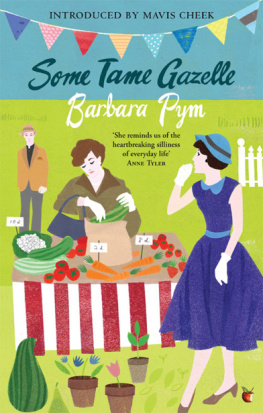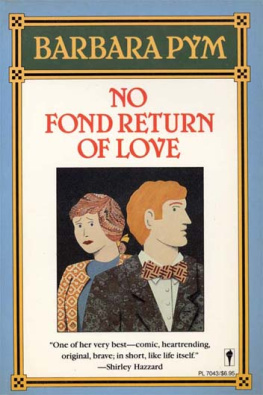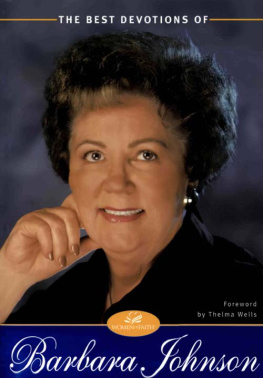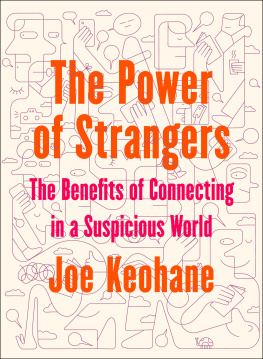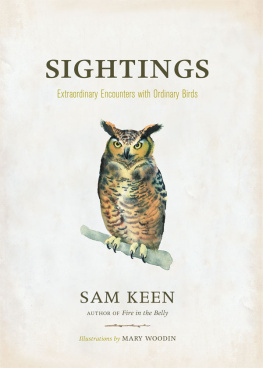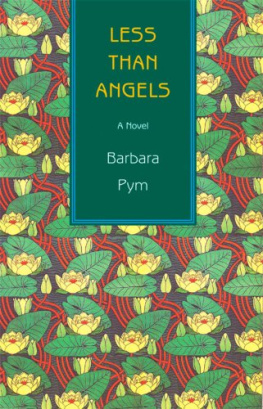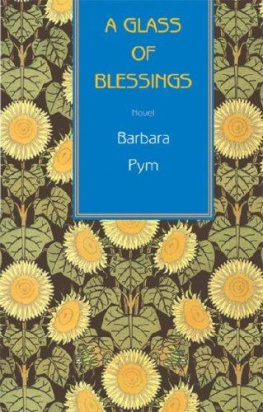Barbara Pym - Civil to Strangers
Here you can read online Barbara Pym - Civil to Strangers full text of the book (entire story) in english for free. Download pdf and epub, get meaning, cover and reviews about this ebook. year: 1989, publisher: Plume, genre: Art. Description of the work, (preface) as well as reviews are available. Best literature library LitArk.com created for fans of good reading and offers a wide selection of genres:
Romance novel
Science fiction
Adventure
Detective
Science
History
Home and family
Prose
Art
Politics
Computer
Non-fiction
Religion
Business
Children
Humor
Choose a favorite category and find really read worthwhile books. Enjoy immersion in the world of imagination, feel the emotions of the characters or learn something new for yourself, make an fascinating discovery.

- Book:Civil to Strangers
- Author:
- Publisher:Plume
- Genre:
- Year:1989
- Rating:3 / 5
- Favourites:Add to favourites
- Your mark:
- 60
- 1
- 2
- 3
- 4
- 5
Civil to Strangers: summary, description and annotation
We offer to read an annotation, description, summary or preface (depends on what the author of the book "Civil to Strangers" wrote himself). If you haven't found the necessary information about the book — write in the comments, we will try to find it.
Civil to Strangers — read online for free the complete book (whole text) full work
Below is the text of the book, divided by pages. System saving the place of the last page read, allows you to conveniently read the book "Civil to Strangers" online for free, without having to search again every time where you left off. Put a bookmark, and you can go to the page where you finished reading at any time.
Font size:
Interval:
Bookmark:
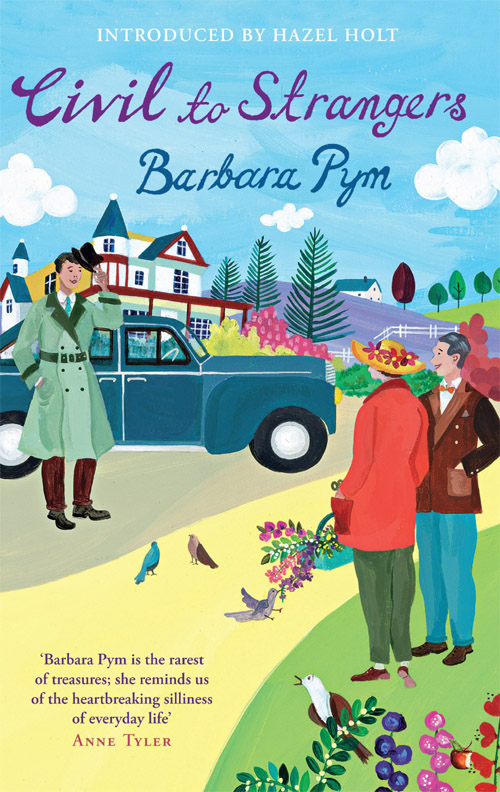
Published by Hachette Digital
ISBN: 978-0-748-12810-5
All characters and events in this publication, other than those clearly in the public domain, are fictitious and any resemblance to real persons, living or dead, is purely coincidental.
Copyright 1987 by Barbara Pym
All rights reserved. No part of this publication may be reproduced, stored in a retrieval system, or transmitted, in any form or by any means, without the prior permission in writing of the publisher.
Hachette Digital
Little, Brown Book Group
100 Victoria Embankment
London, EC4Y 0DY
www.hachette.co.uk

MODERN CLASSICS
556

Barbara Pym
Barbara Pym (19131980) was born in Oswestry, Shropshire. She was educated at Huyton College, Liverpool, and St Hildas College, Oxford, where she gained an Honours Degree in English Language and Literature. During the war she served in the WRNS in Britain and Naples. From 19581974 she worked as an editorial secretary at the International African Institute. Her first novel, Some Tame Gazelle, was published in 1950, and was followed by Excellent Women (1952), Jane and Prudence (1953), Less than Angels (1955), A Glass of Blessings (1958) and No Fond Return of Love (1961).
During the sixties and early seventies her writing suffered a partial eclipse and, discouraged, she concentrated on her work for the International African Institute, from which she retired in 1974 to live in Oxfordshire. A renaissance in her fortunes came in 1977, when both Philip Larkin and Lord David Cecil chose her as one of the most underrated novelists of the century. With astonishing speed, she emerged, after sixteen years of obscurity, to almost instant fame and recognition. Quartet in Autumn was published in 1977 and was shortlisted for the Booker Prize. The Sweet Dove Died followed in 1978, and A Few Green Leaves was published posthumously. Barbara Pym died in January 1980.
Some Tame Gazelle
Excellent Women
Less than Angels
A Glass of Blessings
No Fond Return of Love
Quartet in Autumn
The Sweet Dove Died
A Few Green Leaves
Crampton Hodnet
An Unsuitable Attachment
An Academic Question
Jane and Prudence
When A Last Sheaf was published, several years after Denton Welchs death, Barbara Pym wrote, How splendid that we are to be given one more Denton. When she died in 1980 she left not only nine published novels, but also a considerable amount of unpublished material. So I gathered together Barbaras own last sheaf, a final selection from her unpublished writings.
Barbara Pym was from a generation that disliked waste and was naturally frugal: she made over her old clothes (letting in bands of different colours to achieve a newly fashionable hemline) and devised delicious meals from leftovers. She was equally thrifty in her work. Characters from her early, unpublished work appear in later novels (for example, Miss Morrow and Miss Doggett from Crampton Hodnet are later found in Jane and Prudence, as well as in the short story So, Some Tempestuous Morn), and when she was unable to find a publisher for An Unsuitable Attachment, she salvaged Mark and Sophia Ainger and, especially, Faustina for use in The Christmas Visit. So I am sure she would be pleased that so much of her work that wasnt published in her lifetime is available to be read and enjoyed.
From the beginning of her career as a published novelist in 1950 (though she had been writing novels since the age of sixteen), she had consistently good reviews. John Betjeman described her, in 1952, as a splendidly humorous writer and the chorus of praise grew with each new book until her later novels were best-sellers here and in the United States where she had a growing following. The novelist Anne Tyler wrote, Whom do people turn to when theyve finished Barbara Pym? The answer is easy; they turn back to Barbara Pym, and John Updike in the New Yorker wrote of her novels: A startling reminder that solitude may be chosen and that a lively, full novel can be constructed entirely within the precincts of that regressive virtue, feminine patience. Best of all was her champion Philip Larkins assertion that hed sooner read a new Barbara Pym than a new Jane Austen. In 1977 she was on the shortlist for the Booker Prize for Quartet in Autumn (even more prestigious then, when there were few literary awards) and received the popular accolade of appearing on Desert Island Discs.
This late success was especially heartening as she had previously had such a blow to her confidence. When Jonathan Cape rejected An Unsuitable Attachment in 1963, Barbara tried to place it with other publishers, but in the 1960s her novels were thought to be old fashioned. As one publisher remarked, it was not the sort of book to which people were turning. There followed fourteen years of rejection and frustration until, in 1977, the Times Literary Supplement published a list, chosen by eminent literary figures, of the most underrated writers of the century. Barbara was the only living writer chosen by two people: Lord David Cecil and Philip Larkin. She was deemed publishable again.
After her death in 1980 she left behind complete but unpublished novels, half-finished works, short stories and a mass of papers especially diaries and the series of notebooks where she had noted down odd thoughts, comments, overheard remarks and ideas for novels. It seemed, given the interest her novels had aroused, suitable to publish the latter. A Very Private Eye: An Autobiography in Diaries and Letters (published in 1984) caused a minor publishing sensation, giving, as it did, a fuller, and unexpected, picture of her very varied life. It was received with enthusiasm and there seemed to be a desire for more Barbara Pym. An Unsuitable Attachment had finally been published in 1982 and received good reviews here and ecstatic ones in the United States: the Washington Post commented, The publisher must have been mad to reject this jewel. The cut-glass elegance of her precise understated wit sparkles, her understanding of the human heart gleams more softly but just as bright and the New Yorker called it a paragon of a novel. Then Crampton Hodnet was published in 1985 and An Academic Question followed in 1986.
Civil to Strangers, which appeared in 1987, was the result of requests from the many scholars writing about her novels, who wanted access to her earlier work, but which also proved very popular with all her non-academic readers.
The novel at the centre of this collection was written in 1936, when she was twenty-three, and has all the confidence of youth. She greatly admired the novels of Elizabeth von Arnim, especially The Enchanted April, and she seems to have made it the springboard, as it were, for this book. There are several parallels: the selfish, uncaring husband, the apparently submissive wife who, nevertheless, observes life with an ironic eye, and the transformation of a difficult husband by the Romance of Abroad. The style has something of the same cadence formal, light, elegant, slightly sardonic. But Barbara could never be just an imitator and her own personality comes through early on. Then there are the purely Pym characters: the Rector and his family, Mr Paladin the curate, as well as the splendid Mrs Gower and no one but Barbara could have written chapter thirteen. This novel is interesting too because it is one of the few in which the heroine goes abroad, and the passages set in pre-war Budapest have the charm and interest of descriptions of a vanished world.
Font size:
Interval:
Bookmark:
Similar books «Civil to Strangers»
Look at similar books to Civil to Strangers. We have selected literature similar in name and meaning in the hope of providing readers with more options to find new, interesting, not yet read works.
Discussion, reviews of the book Civil to Strangers and just readers' own opinions. Leave your comments, write what you think about the work, its meaning or the main characters. Specify what exactly you liked and what you didn't like, and why you think so.

